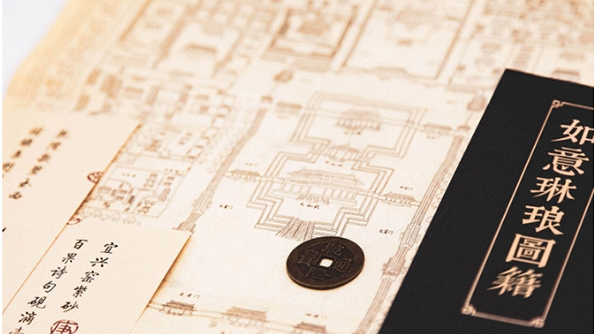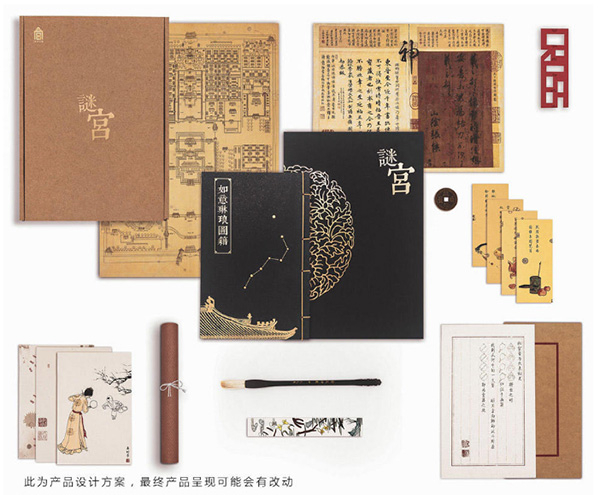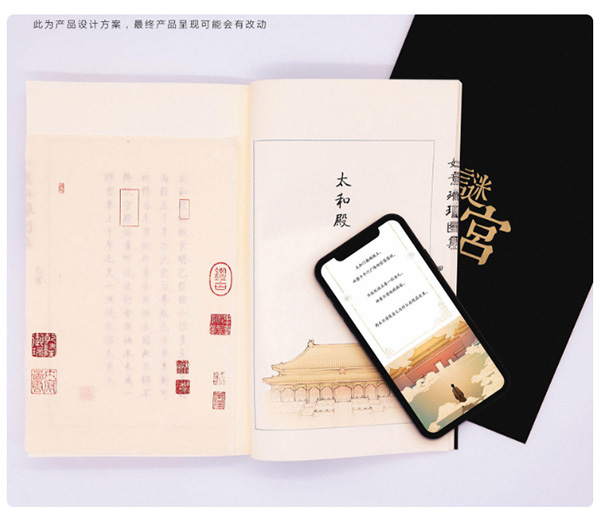
Culture
21:08, 23-Nov-2018
Palace Museum to launch puzzle-solving game book
Updated
20:57, 26-Nov-2018
CGTN

An interactive puzzle-solving game book, Migong: Ruyi Linlang Tuji (Mystery Palace: Map of Treasures in the Palace), which looks deeper at the life of Emperor Qianlong of the Qing Dynasty (1644-1911), will be published by the Palace Museum, also known as the Forbidden City.
Legend has it that a book by the name of Ruyi Linlang Tuji by a palace artist was discovered in the Palace Museum in 1766, the 31st year during Emperor Qianlong's reign. The book was so difficult to decipher that it was deemed "useless" and then it disappeared.
Later, rumors started spreading that Ruyi Linlang Tuji actually contained the location of treasures inside the Palace Museum, treasures rich enough to change the course of one's life.

Product design. /Palace Museum Photo
Product design. /Palace Museum Photo
Zhou Ben, a nameless artist in the palace, one day inadvertently discovered the book among a pile of papers. Having heard the rumor, Zhou made up his mind to find the treasures, little knowing about the obstacles he would face and the intricate palatial battle he would entangle himself in during the process.
More than two centuries later, the Palace Museum is now giving readers a chance to be Zhou Ben across time and space through the release of Migong: Ruyi Linlang Tuji. Readers can now flip through the pages of the labyrinth of perplexities, decode hints and discover the hidden treasures.
Full of innovation
Xu Aolin, the game designer, said he clearly remembers where the project unfolded.
"We were walking around and came across a painting. Wang Zhiwei from the publishing house then introduced it to us."
The painting was Eightieth Longevity Picture of Empress Dowager Chongqing painted during the 36th year of the reign of Emperor Qianlong in celebration of the 80th birthday of the empress dowager.
"We then thought whether we could create a game plot based on this painting," Xu added. He later discovered about Zhou Ben, who was one of the three painters that worked on the painting and set the storyline.

Product design. /Palace Museum Photo
Product design. /Palace Museum Photo
There are little historical records on Zhou, which conveniently gave enough space for imagination during the process of creation.
There are more than 30 interlocking missions in the game, and many are closely related to this painting.
"There are many historical details hidden in the book. We will not say where, and hopefully readers will discover those if they pay close attention," added Wang.
"We used a lot of traditional Chinese elements in the design including palatial paintings, architecture, history, theatrical art, and even chess scores, so as to provide more ways to understand history while playing the game."
The interactive game book is the first attempt by the Palace Museum. The publishing house originally aimed to gather 100,000 yuan (around 14,418 U.S. dollars) through crowdfunding, which it did with ease as the figure surpassed 1 million yuan in just 10 hours, a record-breaking figure in crowdfunding for Chinese publishing industry. Now, the figure stands at 10 million yuan in just 26 days.
Migong: Ruyi Linlang Tuji is scheduled to go on pre-sale at the Palace Museum flagship stores both offline and online in December. Hard copies are scheduled to go on shelves in January 2019.
Source(s): China Daily

SITEMAP
Copyright © 2018 CGTN. Beijing ICP prepared NO.16065310-3
Copyright © 2018 CGTN. Beijing ICP prepared NO.16065310-3